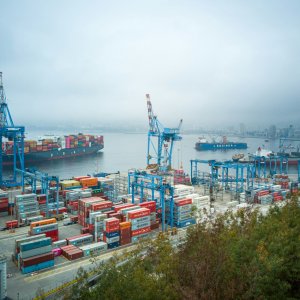Ultra-Fast Fashion: Why Is It Successful?

STORY INLINE POST
Even though fashion is in "constant evolution," we have taken this concept too far with ultra-fast fashion. Thousands of new models every day on websites while at the same time, there is labor exploitation, child labor and hundreds of thousands of single-use garments in public garbage dumps. You can google "fast fashion and Atacama desert in Chile" to see what I am talking about.
Stores like Zara and H&M were among the first to work this type of business model, but now, these brands are competing strongly with new online fashion brands.
The great success of countries like China and Bangladesh in terms of textile imports is based on cheap labor and their ability to reproduce whatever is asked of them. That is well known, but in reality, little is known about what is being done by large fast-fashion companies, such as:
- Paying wages below minimum wage
- Labor exploitation
- Child exploitation
- Inhumane working conditions operating under unsafe parameters.
Ultra-fast fashion is the latest fashion revolution, considered by many as altering the global textile landscape just when it was aiming for a more local and sustainable fashion. It is about having thousands of new models daily on websites. Let's remember that about 10 or 15 years ago, the seasons or collections were divided into two per year: spring and summer; with fast fashion, we started to see new collection
s every two or three months. More recently, we have had new collections every week or every 15 days. Having thousands of new models every day on the website is a decision that undoubtedly has consequences.
With ultra-fast fashion, we tell the consumer that they must have a certain garment in their closet, because it is the fashionable garment and they must have it NOW! With super-low prices and suspicious quality, these Chinese brands have managed to penetrate markets as important as Europe and Latin America, taking advantage of the low purchasing power with more than accessible prices and an area of opportunity: the lack of fashion in all sizes (we are talking about extra sizes in Latin America, with sizes up to 6XL).
But, beyond the low prices and excess fashion offer, what has made certain Chinese fast-fashion brands successful?
From my viewpoint, excellent management of social networks, data analysis, good management of international logistics, investment in digital marketing and taking advantage of needs not met by traditional brands has led these companies to success.
Social Media, Digital Marketing and Data Analysis
These young online fashion brands have done an excellent job in digital marketing, from appearing as the No. 1 result in search engines, to having guidelines in the main social networks and a network of tracking visits to their websites. By providing your data to these sites, you basically grant them permission to appear in every move you make on the internet, as well as create predictive-based styles. Their work with celebrities, influencers, tik-tokers and youtubers has put them in the spotlight in the community of people with internet access and consumer capacity.
International Logistics
Being on another continent has not stopped them from having "express" and normal deliveries. These deliveries range from three business days to 30 days for free shipments. Their agreements with major logistics companies around the world have enabled this when customers make a purchase on their website.
Ummet Needs
These brands have done very well in serving markets ranging from sizes XXS to 6XL, sizes that we would hardly find in department stores or even in some other fast-fashion chains, such as Zara and H&M. They have offered fashion to sizes that never had access to it and this has positioned these brands as favorites for their fashion offer, affordable prices and "immediate" deliveries.
At least in Mexico, the fast-fashion market has significantly damaged Mexican fashion companies, to the point of bankruptcy, because it is impossible to compete on price with these online fashion brands.
In order not to "die trying," small local brands of sustainable fashion or at least slow fashion, should focus on:
- Finding the market niche that values the brand and its designs.
- Start as local producers to expose who makes the clothes, their testimony of working for a certain company and thus try to make the public connect with this part of local support.
- Highlight personalized customer service and conflict resolution in your language.
- Creating a national delivery logistics system up to "next business day delivery.".
International competition is getting bigger, more voracious and agile. As local producers, we have to fight to find our niche, one that values what we do. As consumers, it is time to reflect on our consumption patterns.























